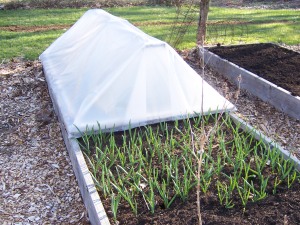Mid August brings heat and harvest chores. I must pick daily to keep up with the plants. Cucumbers, summer squash, beans, peppers and tomatoes fill the baskets. It seems the vegetables are growing fast but then I see the weeds are growing faster!
I went to Maine for a visit to the Coastal Maine Botanical Garden. I highly recommend a visit if you find your self in the Boothbay area. I saw gardens of all kinds and sculptures artfully placed in outdoor spaces. Children are invited to create fairy houses with natural material for the fairies that live in this glorious setting. Another excursion was to Endless Summer Flower Farm, a dahlia and perennial farm located in Camden, Maine. Owner Phil Clark graciously engaged us with his 230 varieties of dahlias, all growing in his back yard and side field. Just glorious, enticing me to purchase tubers to be delivered in the spring. A flower bouquet of cut dahlias was brought back to my hosts. The flowers were very beautiful. Maine gardeners have a slightly shorter growing season and many of the same weeds as I do in Connecticut.
Now is the time to keep up the the weeds. Any plant allowed to produce will become weeds in the next several growing years. This year I discovered cilantro in every nook of open soil. While I didn’t mind the herb earlier in the season, now they have all grown four foot high with seed pods containing the spice coriander. I am trying to collect the seeds in paper bags before they burst. Once captured I store them in glass jars in the spice cabinet for crushing the seed with a mortar and pestle when I have a recipe calling for ground coriander. The leaves can be dried and saved as an herb, but should be done before the flowers form. Dill spreads in much the same way as cilantro. Both herbs have become a weed in my vegetable garden.
Other weeds having a ‘field day’, (pun intended), are crabgrass and galinsoga. Galinsoga will set flowers at the tender age of eight weeks. It produces over 7500 seeds per plant. Seeds require no cold period, so they can germinate as soon as they mature and drop to the ground. Many seeds will overwinter, germinating next year and in subsequent years. Crabgrass is an annual that will die with the first hard frost. If allowed to produce seed, you can be sure seed produced this year will germinate in early spring next year making the weed problem worse.
I use mulch in the pathways to keep the weeds down, but the wood chips brought in harbored their own set of weed seeds. I now have fox grape, a semi-woody vine, that is difficult to pull out. I feel I will be fighting this one for a few years to come. Some people use hay on the gardens as mulch. Use straw instead, it contains less seed. Hay will add not only weed seeds but grassy seeds intended as animal food. Straw is more woody, breaks down slower than hay and is usually cut before it gets to the seed production stage. Bark mulch is a great alternative usually not infected with any weed seeds. A living mulch of clover can be used in pathways, especially if you have raised beds. Once the clover grows taller, mow or weed wack it down to a desirable height.
All of this pick of produce and pulling of weeds makes some glad the summer season is closing. But the fall growing season is just beginning. As the weather cools down, all the crops grown in the spring time can be grown again in the fall. They are, after all, cool weather crops. I start lettuce, spinach and kale directly in the garden for fall harvest. Root crops of carrots, beets, parsnip and turnip can be planted now. If the ground temperature is too warm for germination, start flats inside the house out of the sun’s direct heat. Transplant when at the two leaf stage.
I keep a bed of mixed lettuce specially chosen for cold tolerance. The other half of the bed is put in spinach. I have a 2 x 4 wood frame attached to PVC pipes covered with painter’s plastic to create a small greenhouse tent. Hinges were added so it can be easily lifted and opened. This fall crop of greens will keep producing well into December before it goes dormant for a few months. Come the last week of February and the first bit of longer sunny days, and these same plants come back to life. I prop the cover open on bricks if full sun is in the forecast so the plants don’t overheat. 

– Carol
